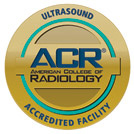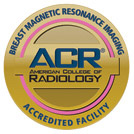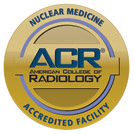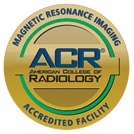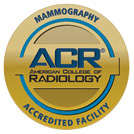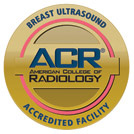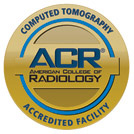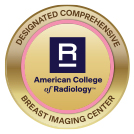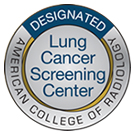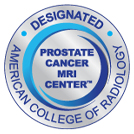A needle biopsy, in conjunction with medical imaging, helps to identify the position of a nodule or abnormality in the body and extracts a sample of tissue to be examined.
A doctor may recommend this procedure if other imaging tests have been unable to determine if a nodule is benign or a bronchoscopy cannot access the nodule.
What Is Needle Biopsy of the Lung?
This less-invasive procedure may be preferred over surgical biopsy, as it usually does not require general anesthesia.
For lesions, nodules and areas of abnormal tissue located within the lung, your doctor may first request a chest X-ray or another imaging procedure. While these nodules are not typically painful, imaging cannot always indicate if they are benign or cancerous.
To determine this, a needle biopsy or aspiration uses a hollow needle to remove a sampling of cells, which are then examined under a microscope. To guide the procedure, computed tomography (CT), fluoroscopy, ultrasound or MRI helps the radiologist identify and extract the cells from the abnormal growth or, in the case of a pleural biopsy, part of the pleural membrane.
During the procedure, a radiologist inserts the needle through the skin toward the lesion, then removes a tissue sample through one of the following methods:
- Fine Needle Aspiration: A fine-gauge needle and syringe help remove fluid or a cluster of cells.
- Core Needle Biopsy: An automated mechanism guides the needle and helps draw out a “core” of tissue. An outer sheath removes and holds onto a portion of the tissue as this process repeats multiple times.
For all procedures, the radiologist uses a hollow biopsy needle to sufficiently capture enough tissue or cells and a barrel that’s roughly the size of a paper clip. A small-gauge needle is narrower than an instrument used to draw blood. A core needle also includes an inner, spring-loaded needle that’s connected to a receptable and covered by a sheath.
Along with the needle, one of these imaging methods can provide guidance:
- CT Scan: A patient passes through a large machine with a tunnel in the center. During the procedure, a gantry holds an X-ray tube and X-ray detectors that travel around you to take images. Once processed, the images appear on a computer in an adjacent room.
- Fluoroscopy: The patient sits on a radiographic table while one or two X-ray tubes and a detector take images. Fluoroscopy converts them into video images, which are then displayed on a monitor.
- Ultrasound: A transducer sends out inaudible, high-frequency sound waves and records the returning echoes. These signals create the images based on amplitude, frequency and time, which are then processed by a computer console and displayed on a video screen. Before the procedure, gel is applied to the patient’s skin to eliminate air pockets and produce clearer images.
Who Should Have This Procedure?
Over half of all nodules in the lungs and chest are benign. However, nodules are malignant until a biopsy confirms otherwise. Once one is identified, your doctor will first request an imaging procedure. If results are not conclusive and a bronchoscopy cannot reach the nodules, a needle biopsy will be performed.
When excess fluid exists in the pleural space and thoracentesis cannot identify the cause, your doctor may request a pleural biopsy. In this case, a needle is used to remove a tissue sample from the pleural membrane to be examined for the presence of cancer cells, tuberculosis or a viral, fungal or parasitic disease.
In all cases, needle biopsies deliver reliable results and are less invasive than surgical biopsies, which create a larger incision in the skin or require general anesthesia. Both procedures provide equally dependable results, although recovery time for a needle biopsy is considerably less. Patients can resume their day-to-day activities shortly after.
Certain risks do exist, including:
- Infection requiring antibiotics
- Bleeding
- Coughing up blood
- A collapsed lung
- Radiation exposure, a concern for pregnant patients
Needle biopsy is not ideal when the lesion or abnormality is small – roughly one to two millimeters in diameter. Not enough tissue exists for an accurate diagnosis and the area is too small to reliably access.
Patients with certain lifestyle habits or conditions may not be good candidates for a needle biopsy. Individuals living with the following conditions may be steered toward routine imaging and having the nodule surgically removed:
- Emphysema
- Lung cysts
- Blood coagulation disorders
- Insufficient blood oxygenation
- Pulmonary hypertension
- Heart failure
In a small number of cases, the tissue obtained during a biopsy may not be adequate enough for an accurate diagnosis.
Preparation
Prior to your appointment, discuss any allergies, recent illnesses or medical conditions, including if you think you are pregnant Also list the medications you currently take, including herbal supplements and aspirin.
You doctor may instruct you to avoid eating and drinking for at least eight hours before your biopsy, although patients may take certain medications with small sips of water. You may have to alter or refrain from taking certain medications ahead of time, including adjusting your insulin dosage or stopping aspirin and blood thinners for a few days.
Image-guided needle biopsies are done on an outpatient basis by an interventional radiologist. On the day of the procedure, you should arrive in comfortable clothing and leave jewelry and anything metal at home. Once the procedure begins:
- A nurse or technologist will insert an IV into your vein or arm to deliver a sedative or relaxation medication. Then, a local anesthetic will be injected near where the needle will be traveling.
- For CT, MRI and fluoroscopy imaging, you will lie down to start the procedure. A CT scan may be preferred if the nodules are small and deep inside the lung or located near blood vessels, airways or nerves. Once the location is identified, the entry site will be marked on your skin.
- Patients should remain still on the table, avoid coughing and keep their breathing consistent.
- The radiologist will then insert the biopsy needle into the skin, using imaging guidance to angle it toward the nodule and obtain a tissue sample. Once enough tissue is gathered, the needle will be withdrawn.
- After the needle is removed, pressure will be applied to the incision area to stop the bleeding and a dressing placed on top. The mark is small enough that sutures will not be required.
- Following the procedure, patients will be asked to wait in an observation area for several hours. Additional imaging may be performed to check for complications.
If a pleural biopsy is requested, the needle will pass through the back and into your chest cavity. The doctor will remove a sample through fine needle aspiration or a core needle biopsy.
Following a needle biopsy, patients should leave the dressing on for a full day before removing it. You’re also asked to avoid exerting yourself physically, including heavy lifting or participating in sports. Patients can generally resume all normal activities after the dressing is removed, although they should consult their radiologist if they plan to travel by airplane.
Patients should not be alarmed if they feel soreness at the biopsy site as the anesthesia wears off. Some individuals report coughing up blood after, although this symptom disappears within 48 hours.
It’s also recommended you know the signs of a collapsed lung, including shortness or difficulty catching your breath, a rapid heart rate, pain in the shoulder or chest, or a blue tint on the skin. Patients with these symptoms should seek immediate emergency attention and contact their physician.
After the sample is removed, a pathologist will examine it before making a final diagnosis. Your doctor or the interventional radiologist will contact you with results and may recommend scheduling a follow-up visit or additional imaging and blood work.
Has your doctor recommended a needle biopsy of the lung? Contact us to make an appointment today!





